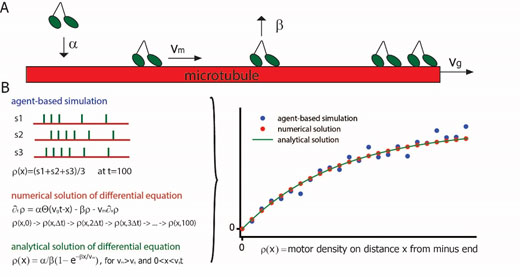As an experimental scientist in the life sciences, should your publications contain models? (Un)surprisingly the answer might often be no. Overwhelming progress has been made in the biological sciences without explicit quantitative modeling. In our paper we discuss in which cases modeling is useful, what a good model looks like, and last but not least, how to present a model. We discuss three points:
- When is modeling useful?
A model might be needed to interpret data, to confirm or reject a hypothesis via generating predictions, as a consistency check, or to extrapolate to otherwise inaccessible parameter ranges. We give concrete examples of these different cases.
2. When to use which type of model and what does solving it mean?
Models differ in purpose and scope and in the ways that they can be analyzed. At one end of the spectrum, universal models have very broad applicability and are relatively easily mathematically solved. At the other end of the spectrum are highly complex models, which include a large number of players and parameters. We discuss these different models with examples based on the interactions between molecular motors and microtubules. For example: the basic interaction between a few molecular motors and one microtubule can, under certain conditions, be described by a simple set of equations. These equations can be used as input for more complex models, where for example many microtubules interact with many different microtubule associated proteins and motor proteins in a spatial confinement.
We also use this example of a few motors with a microtubule to explain different solving strategies as depicted in the Figure and outline the differences between agent-based simulations, numerical solutions, and analytical results.

Figure: Modeling the interaction of molecular motor proteins (green) with a microtubule (red). A) Cartoon of the model. B) Three different solving strategies (left) resulting in different kind of solutions (right).
3. What should a good model look like?
As Einstein famously said: make it as simple as possible but not simpler. This is one of the requirements of a good model. Moreover, a good model should obey physical laws, it should be robust, it should be tested extensively by carefully chosen controls and, importantly, it needs to contribute to our understanding of biological systems. We discuss how these requirements work out in practice based on the seminal work of Luria and Delbruck (1943).
With our Primer we hope to help narrow the often-existent gap between experimental and theoretical work.
Reference
Physical and Mathematical Modeling in Experimental Papers. Möbius W, Laan L. Cell. 2015 Dec 17;163(7):1577-83. doi: 10.1016/j.cell.2015.12.006.


































